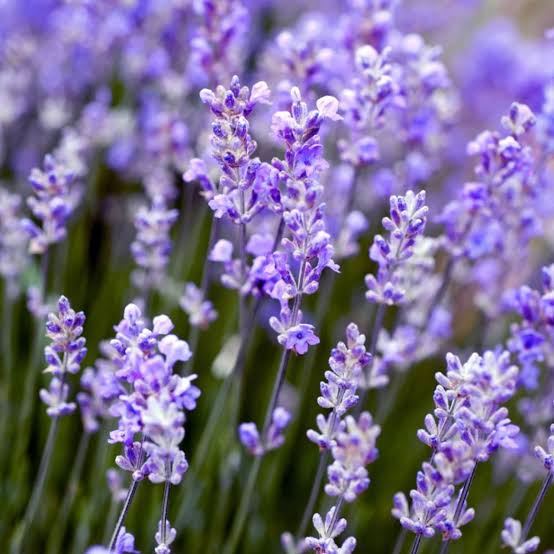Lavender is one of the most beloved plants in the garden — fragrant, beautiful, and wonderfully easy to care for. With its purple blooms and soothing scent, it’s perfect for attracting pollinators, creating homemade crafts, or simply adding charm to your outdoor space. In this guide, you’ll grow smarter with how to plant lavender, learning the best techniques, soil tips, watering tricks, and ways to make your lavender thrive year after year.🌿 Introduction: Why Lavender Is a Garden FavoriteFew plants are as versatile and rewarding as lavender. Native to the Mediterranean, it thrives in sunny, dry conditions and rewards gardeners with color, fragrance, and a touch of elegance. Whether you live in the United States, the United Kingdom, or Canada, you can enjoy lavender’s beauty both outdoors and indoors — in gardens, pots, or windowsills.When you grow smarter with how to plant lavender, you’ll discover how easy it is to grow this timeless herb successfully, even if you’re a beginner.💜 Types of Lavender to Choose FromBefore planting, choose the right lavender variety for your climate and needs. Here are a few popular options:1. English Lavender (Lavandula angustifolia)Hardy and fragrant — great for cooler climates.Popular varieties: ‘Hidcote’, ‘Munstead’.Ideal for hedges, borders, and drying.2. French Lavender (Lavandula dentata)Distinctive toothed leaves and elegant flowers.Prefers milder winters and warmer regions.Perfect for containers and decorative gardens.3. Spanish Lavender (Lavandula stoechas)Recognizable by its “rabbit ear” petals.Excellent for ornamental gardens and pollinators.Each type adds its own charm — just make sure to pick one suited to your local weather.🌞 Step-by-Step: How to Plant LavenderHere’s how to grow smarter with how to plant lavender — from choosing the right spot to keeping it healthy all season long.Step 1: Choose the Perfect LocationLavender loves full sunlight — aim for at least 6 to 8 hours of direct sun daily.Pick a well-draining spot to prevent root rot.If your soil is heavy or clay-like, plant lavender in raised beds or pots.Step 2: Prepare the SoilLavender thrives in slightly alkaline, sandy, or gravelly soil.Mix garden soil with sand or perlite to improve drainage.Ideal pH: 6.5 to 7.5.Avoid fertilizers — lavender prefers lean soil!Step 3: Planting Lavender Seeds or SeedlingsYou can start lavender from seeds, cuttings, or nursery plants.For seeds:Sow indoors 6–8 weeks before the last frost.Lightly press seeds into the soil but don’t cover them — they need sunlight to germinate.Keep warm (around 70°F / 21°C) and moist until sprouts appear.For seedlings or nursery plants:Dig a hole twice as wide as the root ball.Place the plant in the hole with the crown just above soil level.Backfill gently and firm the soil around the base.Step 4: Watering SmartlyWater deeply but infrequently.Let the top inch of soil dry before watering again.Overwatering is one of the biggest causes of lavender failure!Step 5: Mulching & SpacingUse gravel or small stones for mulch — not organic mulch that holds moisture.Space plants 18–24 inches apart for air circulation and growth.🌸 How to Care for Lavender After PlantingOnce established, lavender is wonderfully low-maintenance. Follow these tips to keep it happy and healthy:1. Prune RegularlyTrim lightly after flowering to encourage new growth.Cut back about one-third of the plant in early spring (but never into woody stems).2. Control MoistureLavender hates wet feet!Make sure soil drains well, especially during rainy seasons.3. Fertilize SparinglyToo much nitrogen causes floppy, weak growth.If needed, use a low-nitrogen, slow-release fertilizer once in spring.4. Protect in WinterIn cold regions (zones 4–5), cover plants with mulch or bring pots indoors.Avoid soggy soil — dry roots help plants survive frost better.🌺 Propagation: How to Multiply Your LavenderWant more lavender plants for free? Try stem cuttings!In summer, cut a 4-inch stem from a healthy plant.Remove lower leaves and dip the cut end in rooting hormone (optional).Plant in sandy soil or a small pot.Keep in bright light with light moisture until roots develop.In a few weeks, you’ll have a brand-new lavender plant — perfect for gifting or expanding your garden.🌿 Benefits of Growing LavenderWhen you grow smarter with how to plant lavender, you gain more than just beauty. Lavender offers a host of benefits:Attracts pollinators like bees and butterflies.Repels pests such as mosquitoes and moths.Fragrant blooms for sachets, candles, and homemade oils.Calming aroma that promotes relaxation and better sleep.Drought-tolerant and low-maintenance once established.🏡 Creative Ways to Use LavenderLavender isn’t just a garden plant — it’s a lifestyle! Here are a few creative uses:🌸 Home DécorDry lavender bundles for vases, wreaths, or centerpieces.🧼 DIY Beauty ProductsInfuse lavender into soaps, bath salts, or essential oils for a soothing spa experience.🍰 Culinary CreationsAdd a touch of lavender to desserts, teas, or lemonade for a floral twist.🌿 AromatherapyUse lavender oil in diffusers or pillow sprays to reduce stress and promote calm.💡 Quick Tips for SuccessStart small if you’re new to growing herbs.Avoid heavy watering — lavender thrives on neglect.Harvest early in the day when blooms are most fragrant.Replace plants every 5–7 years for continuous growth and bloom.Pair with companions like rosemary, sage, or thyme for a Mediterranean-inspired garden.🌸 ConclusionWhen you grow smarter with how to plant lavender, you’re not just planting a flower — you’re cultivating peace, fragrance, and timeless beauty in your garden. Lavender rewards you with minimal effort and maximum charm, making it a perfect plant for beginners and seasoned gardeners alike.So grab your gloves, find a sunny spot, and let your lavender garden bloom with life and aroma. Once you’ve planted it, you’ll wonder how your garden ever felt complete without it! 🌿💜

